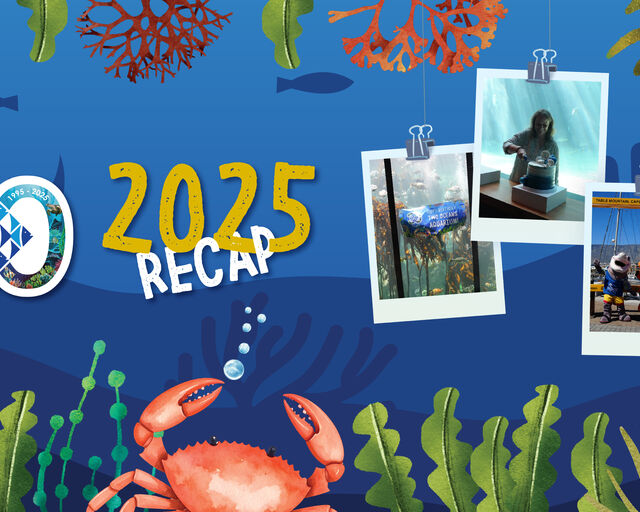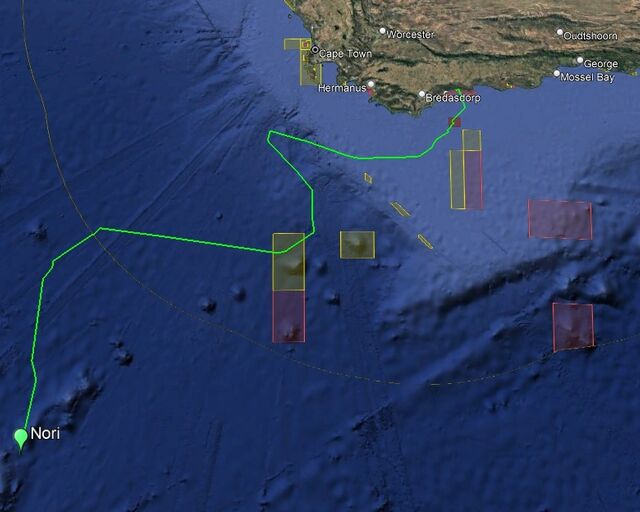This World Shark Day, a collaborative acoustic tagging project is shining a light on elasmobranch movements
The Two Oceans Aquarium Foundation’s research team is thrilled to announce a marvellous new partnership to address key knowledge gaps in marine research, particularly in the field of elasmobranchs (sharks and rays). What better way to celebrate World Shark Day?
Our ocean is home to over 500 species of sharks and over 600 species of rays. World Shark Day is a celebration of this diversity and a reminder that we need to work together to preserve them. This year, the Two Oceans Aquarium Foundation is applauding a collaboration that we hope will contribute to the conservation of key elasmobranch species.
Collaboration for conservation
The Two Oceans Aquarium Foundation, Shark Spotters, the South African Institute for Aquatic Biodiversity (SAIAB) and its marine infrastructure platform, the Acoustic Tracking Array Platform (ATAP), and South African National Parks (SANPARKS) – Scientific Services are collaborating in this nationwide strategic partnership.
The project is entirely focused on three species of elasmobranchs (marine animals with cartilaginous skeletons) that are housed at the Two Oceans Aquarium: The spotted gully shark, common eagle ray, and lesser guitarfish. Together, the partner organisations are utilising acoustic tagging and tracking methods to research the movements, population dynamics, and habitat use of these species, as well as the effectiveness of the bay’s Marine Protected Areas (MPAs). Excitingly, this has the potential to substantiate the need for further protections for marine spaces and wildlife.
Initiated in 2022, the project represents incredible research and skill-development possibilities for early career researchers and conservationists to get their feet wet, while generating valuable data that can drive meaningful conservation outcomes for understudied and vulnerable species in False Bay.
“Collaborative research partnerships are the backbone of research at the Two Oceans Aquarium and support the development of the next generation of ocean leaders,” says Dr Nathalie Viljoen, Head of Research at the Two Oceans Aquarium Foundation.
An innovative tool for marine research
Central to this project is the use of the Acoustic Tracking Array Platform (ATAP). This growing network of receivers along South Africa’s coastline is managed by the South African Institute for Aquatic Biodiversity (SAIAB), an internationally renowned centre for the study of aquatic biodiversity, and a National Facility of the National Research Foundation.
Within False Bay, Shark Spotters manages an impressive network of acoustic receivers that are perfectly situated to pick up the movements of coastal species like spotted gully sharks, common eagle rays, and lesser guitarfish. As the tagged animals swim, their tags emit a high-frequency noise (69 kHz) that is picked up by the acoustic receivers anchored to the seafloor. The receivers record the sound signals with the date, time, and unique ID code of the tag that passes it. This data is habitually retrieved by SAIAB field teams and shared as a report with the partners, providing unique insight into the movements of the tagged species.
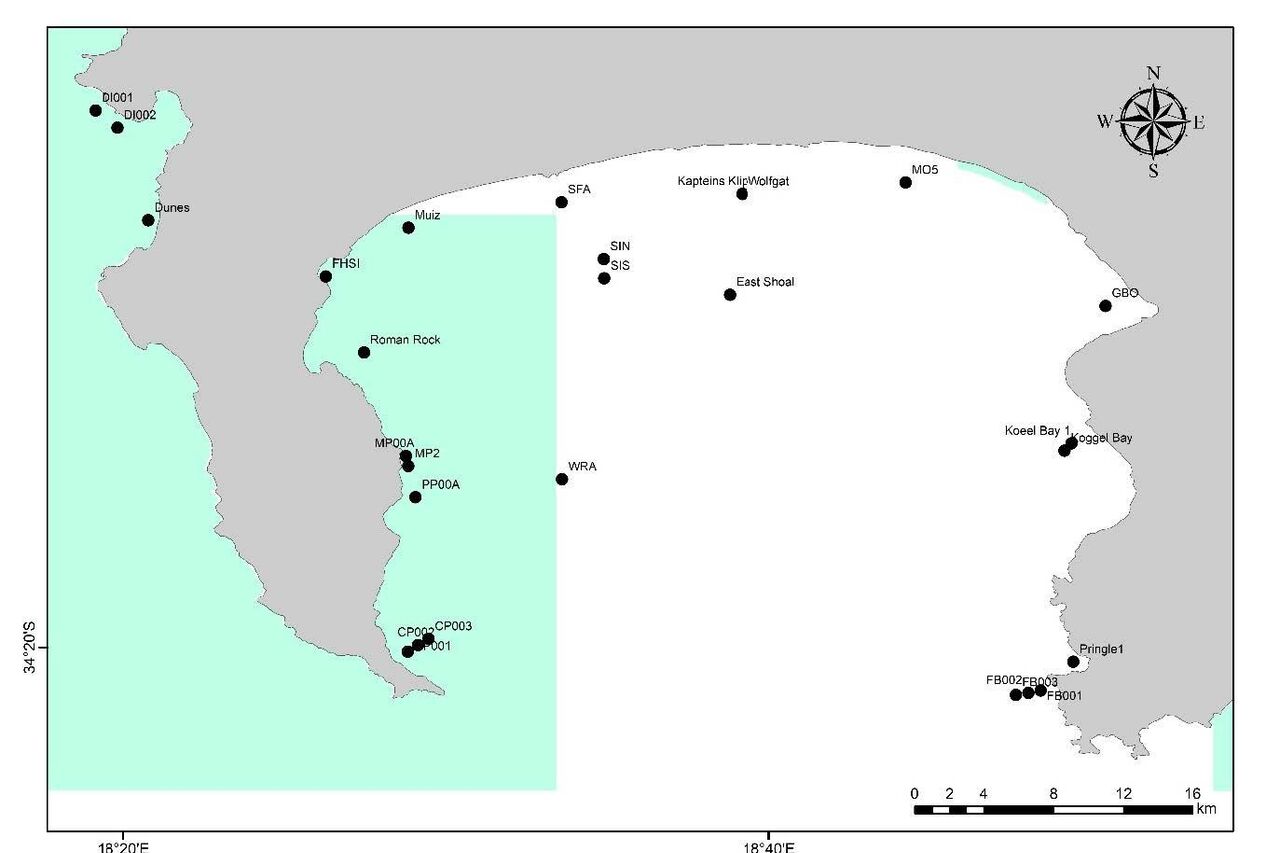
The actual tagging procedure requires the trained hands of Two Oceans Aquarium veterinarian, Dr Ilse Jenkinson. As tags need to be surgically implanted, this requires the utmost care and expertise. The project originally aimed to tag at least 10 individuals per species during the project’s timeframe with these long-life acoustic transmitters or tags. To date, the project has tagged 29 individuals, including 10 spotted gully sharks, 14 common eagle rays, and five lesser guitarfish, with ATAP providing the tags.
By bringing together several organisations to work together in this collaborative capacity, this project has created an incredible environment of knowledge sharing and innovation.
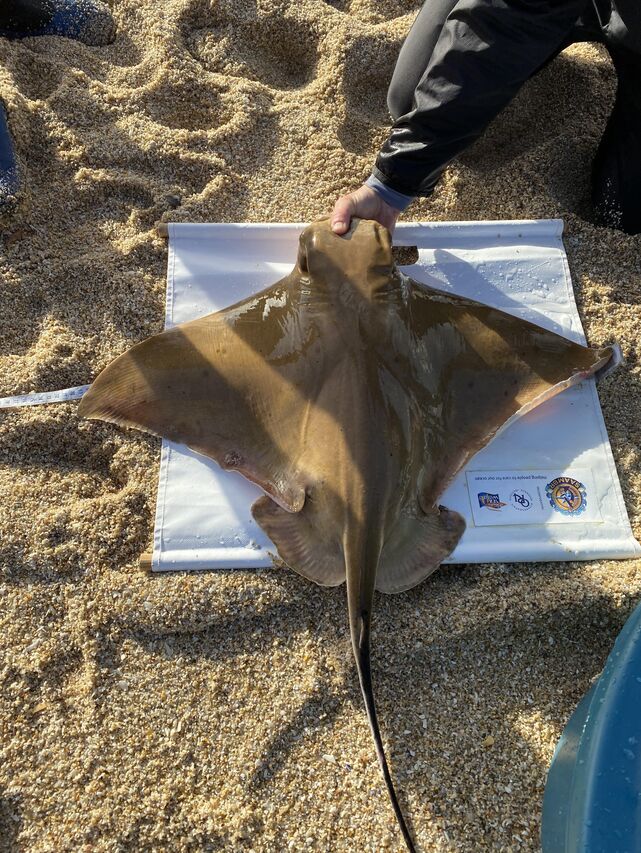
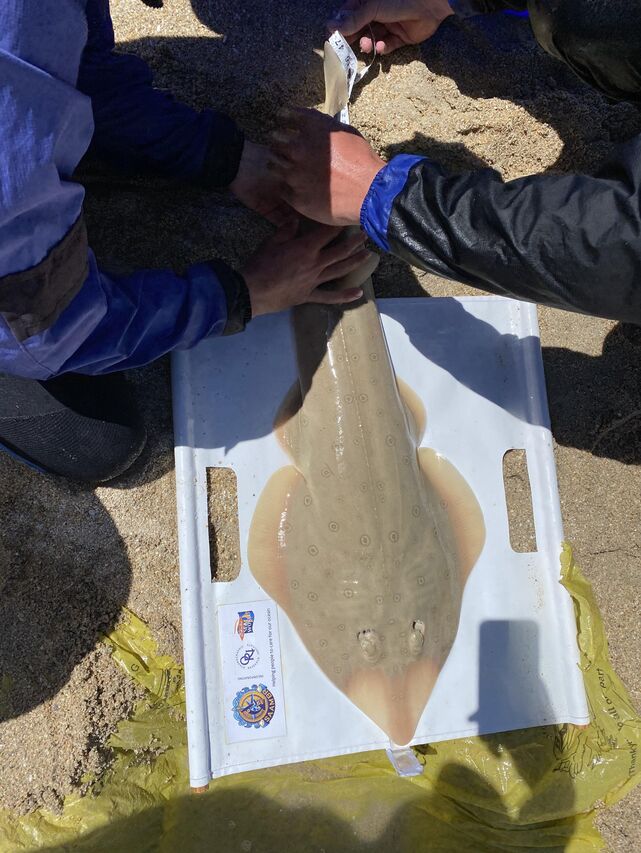
Acoustic tags are a perfect fit for coastal species
As acoustic receivers are fixed in place along the coastline, the tags are ideally suited to species that remain coastal throughout a significant portion of their lives. This was one of the chief reasons that the project chose spotted gully sharks, common eagle rays, and lesser guitarfish as their focus species, as all three are primarily coastal.
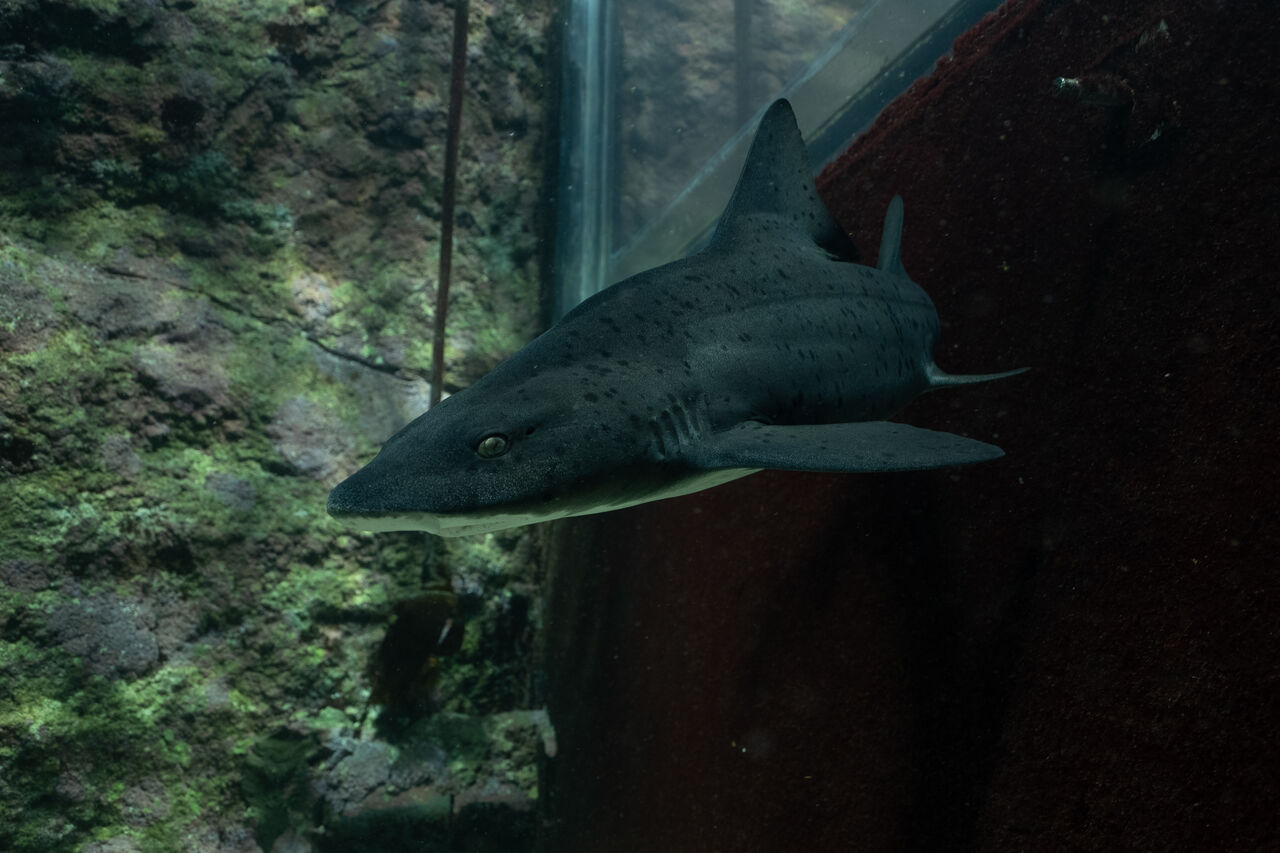
Spotted gully sharks (Triakis megalopterus) are endemic to southern Africa from Angola to KwaZulu-Natal, inhabiting sandy shallow areas and rocky crevices along the continental shelf. The IUCN’s Red List of Threatened Species lists spotted gully sharks as of least concern. Commercial fishing of spotted gully sharks is prohibited in South Africa as they are classified as recreational no-sale species. However, their population is prone to overfishing as they are a popular target for recreational fisheries.
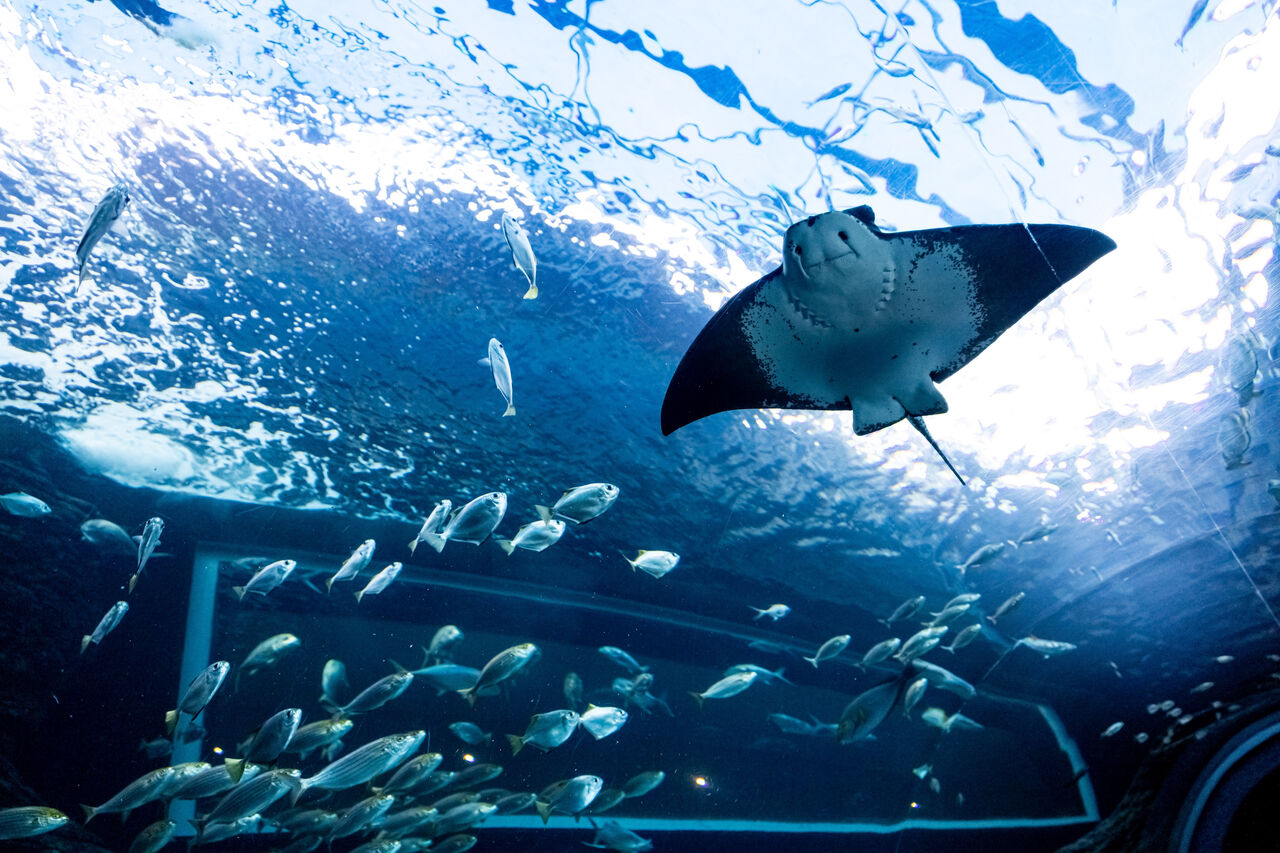
The common eagle ray (Myliobatis aquila) is decidedly not common – it is listed as critically endangered on the IUCN’s Red List. They live in shallow coastal waters along the continental shelf with a range across the eastern Atlantic Ocean, including the Mediterranean Sea. They are frequently caught as bycatch by industrial and artisanal trawl and net fisheries, as well as recreational fishers.
The lesser guitarfish (Acroteriobatus annulatus) is another endemic species to southern Africa, with a range from central Namibia to KwaZulu-Natal. Lesser guitarfish predominantly inhabit inshore waters, using sandy habitats such as estuaries as nursery areas. They are listed as vulnerable on the IUCN’s Red List, as they are frequently caught as bycatch by shore anglers and inshore trawlers.
It is worth noting that all three of these species are subject to being unable to sustain fishing pressure due to their slow rates of reaching sexual maturity and low productivity. The results from this study will have direct implications for the spatial management of these vulnerable species within False Bay, especially concerning MPA effectiveness and the effect of human activity on their populations. Excitingly, the project will also highlight the possibilities for continued research to better understand the spatial ecology of these species.
Why is the project important?
Tracking sharks and rays in False Bay provides valuable insights into their daily, weekly, and seasonal patterns of movement in South Africa’s largest bay. By quantifying where and when species utilise specific habitats, we can start to work toward answering the trickiest question of all - why?
Dr Toby Rogers, Shark Spotters Research Manager, explains, “Using acoustic telemetry, we’ve explored several of these questions in the past including, why do white sharks love hanging around Seal Island during winter, why broadnose sevengill sharks abandoned the kelps forests, and why bronze whalers choose to cruise along the north shore during summer.”
Still, despite their ecological importance as apex predators and keystone species, many of the elasmobranchs within False Bay remain understudied. As a result, and because of direct and indirect human impact, these species are highly susceptible to overexploitation and habitat loss. It has been proven that predator loss causes an adverse domino effect within an ecosystem; species-specific knowledge gaps must be overcome so that suitable conservation measures can be taken to maintain ecological diversity and balance within and out of our MPAs.
Collectively, we can start to understand fascinating ecological interactions within the ecosystem, identify habitats which could be critical for species survival (e.g., nurseries or feeding grounds), and identify areas of human overlap. With this comes the next task of converting knowledge into tangible conservation planning and protection measures, such as fishing bans or strengthening the enforcement of Marine Protected Areas.
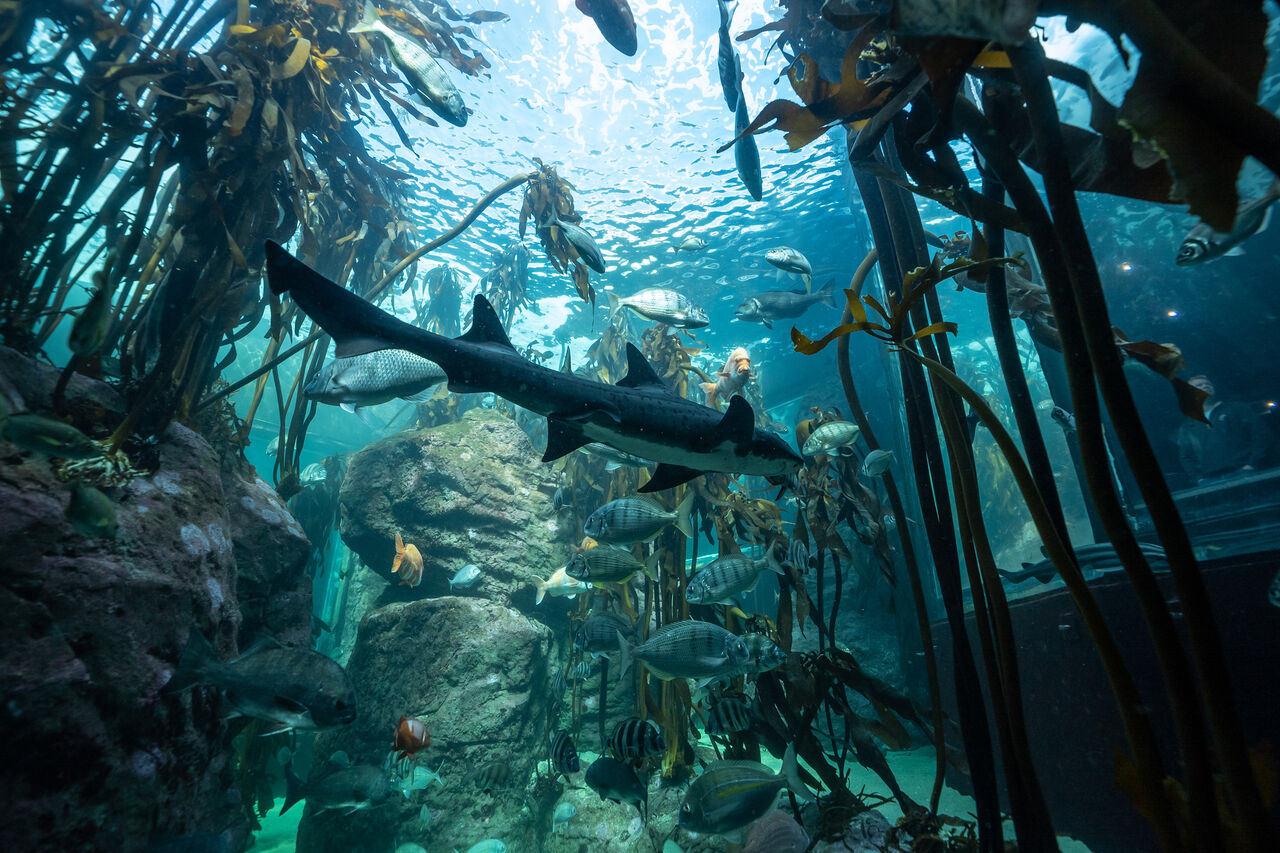
The Two Oceans Aquarium Foundation research team is excited about the possibilities of the elasmobranch project for the future of False Bay and its inhabitants. Pioneering partnerships have been central to the Foundation’s realising its research goals, and joining forces in collaborative efforts such as these enhances research accessibility and grows much-needed marine knowledge in South Africa and beyond. Additionally, being able to share this knowledge with the Aquarium’s audience and wider public may generate interest and support for these vital marine species.
As World Shark Day reminds us, sharks are commonly misunderstood, while other elasmobranchs, like rays, remain unfamiliar to the public. This kind of research goes a long way towards shifting the public’s mindsets from fear to awe of species critical to the balance of the marine ecosystem. The more people know and understand, the more likely they are to add their voices to conservation efforts and become custodians of the species.
Related News
Sign up to our Newsletter
Receive monthly news, online courses and conservation programmes.

